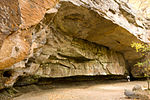Cuyahoga Falls, Ohio
Cities in OhioCities in Summit County, OhioCuyahoga Falls, OhioPopulated places established in 1812Use mdy dates from July 2023

Cuyahoga Falls ( KY-ə-HOH-gə or KY-ə-HOG-ə) is a city in Summit County, Ohio, United States. As of the 2020 census, the city population was 51,114. The second-largest city in Summit County, it is located directly north of Akron and is a suburb of the Akron metropolitan area. The city was founded in 1812 by William Wetmore and was originally named Manchester, but renamed for the Cuyahoga River and the series of waterfalls that run along the southern boundary of the city.
Excerpt from the Wikipedia article Cuyahoga Falls, Ohio (License: CC BY-SA 3.0, Authors, Images).Cuyahoga Falls, Ohio
11th Street, Cuyahoga Falls
Geographical coordinates (GPS) Address Nearby Places Show on map
Geographical coordinates (GPS)
| Latitude | Longitude |
|---|---|
| N 41.145555555556 ° | E -81.496666666667 ° |
Address
11th Street 2648
44221 Cuyahoga Falls
Ohio, United States
Open on Google Maps






